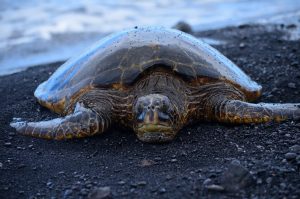MsClimate change is a term used to describe long-term shifts in temperatures and weather patterns. Climate change has many consequences, including severe fires, rising sea levels, flooding, intense droughts, and declining biodiversity. These effects are devastating for animals all over the world. Here in South Florida, there is Everglades National Park, a 1.5 million-acre wetlands preserve. It is made up of pine flat woods, coastal mangroves, and sawgrass marshes, and is home to hundreds of animal species. However, due to climate change, many of these animals are endangered.
•

The Florida Panther
The Florida Panther is one of the largest felines in the wild. It is also the only large feline remaining in the Southeast. While once abundant, today it is estimated that there are fewer than 120 of these left in the wild. While habitat loss due to the growing Florida population is the largest threat to the species, the rising sea levels in Florida will inundate the rest of the species’ habitat.
—————————————————————————————————
The Florida Manatee

Florida manatees are large, gentle aquatic mammals that spend most of their time in shallow waters grazing on vegetation. It is estimated that there are around 1,000-3,000 of this species left. The largest cause of death for these creatures is boat strikes. These boat strikes either instantly kill the manatees or leave wounds in them that kill them over time. Starvation is also another reason why this animal is dying. The rising sea levels are affecting the growth of seagrasses, which grow in shallow water. Hurricanes also impact their food supply.
——————————————————————————————————————————————
Green Sea Turtles

Green sea turtles migrate long distances between feeding grounds and hatching beaches. Warming ocean temperatures are leading to mass coral bleaching which damages the reefs where turtles feed. Changing ocean currents also alter migration paths and feeding patterns. Rising sea levels may also cause nesting beaches to sink.
•
These are only three of several animals living in the Everglades that are endangered. While some of these consequences of climate change are already irreversible, these animals should help South Floridians realize they can’t let this continue to other animals and should do everything possible to stop hurting not only the planet but also all the creatures living on it.








